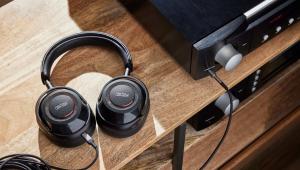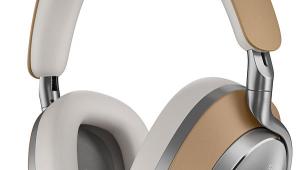Face-Off: 8 Noise-Canceling Bluetooth Headphones Page 2
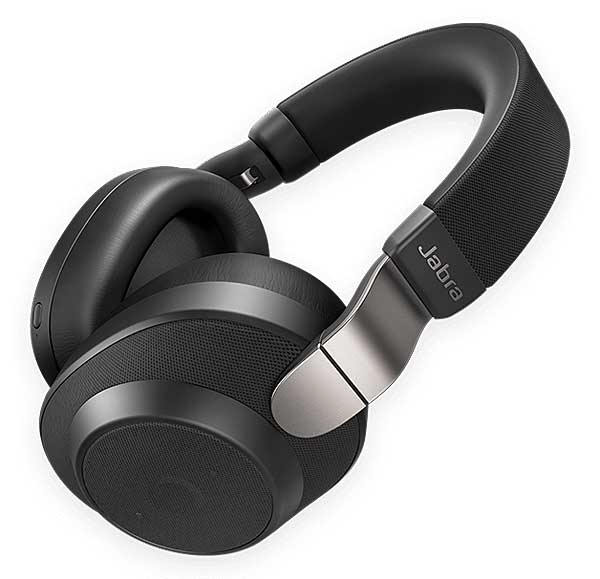
Jabra Elite 85H
($300) jabra.com
If battery life is your main concern, the Jabra Elite 85h is an obvious go-to since it can play wirelessly with full noise-canceling for up to 36 hours—more than any other BT/NC headphones on the market. The Elite 85h is also the easiest to turn on and off: just rotate its unique, cloth-covered earcups into the wearing position to turn it on, and then rotate them back to flat to turn it off. Controls are dead-easy to feel-find and include a concave multifunction control in the center of the right earcup face for play/pause/call answer and pairing, two raised-dot buttons above and below the multifunction control to adjust volume, and a voice assistant access button on the perimeter.
On the left earcup perimeter is an NC on/off/HearThrough button, which merely opens the external mics but neither dampens nor pauses your audio. Disappointingly, there's no conversation mode. However, when you remove the 'phones, your media auto-pauses so you can chat without missing a note.
Not only does the Jabra Elite 85h give you unparalleled battery life, but it was just a shade behind the Bose and Sony models when it came to noise canceling effectiveness; I estimate less than 10 percent of my test cabin hum, and a smidge more TV conversation, eked through than with the Bose. Sonically, the Jabra's frequency balance and soundstage width were both average, although the bass had more physical impact than what was produced by the other BT/NC models. With movies, surround sound was wide and dialogue was crisp.
Jabra's Sound+ app provides a variety of ambient NC and EQ settings, along with a unique set of phone call optimization modes such as Auto-Answer, Call EQ, and a sliding Sidetone setting that adjusts how loud your own voice comes through during a call.
At 10.6 ounces, the 85h is a bit heavier than other BT/NC options, but its headband and earpad cushions are baby skin-soft, and the loose-fitting earcups don't press the sides of your head like other models. Even with their lengthy battery life, the 85h take only 2.5 hours to fully recharge, and just 15 minutes of recharging results in an impressive five hours of playback. When the headphones are powered on but not worn, they automatically enter sleep mode after an hour to conserve power (you can adjust this sleep time in the Jabra Sound+ app), and then power down completely after 24 hours in sleep mode.
Considering its price compared with the other top models, its top battery life, and its above-average sound quality and NC capabilities—not to mention ease-of-use and long- wear comfort—the Jabra 85h is the overall price-performance champ of this test.
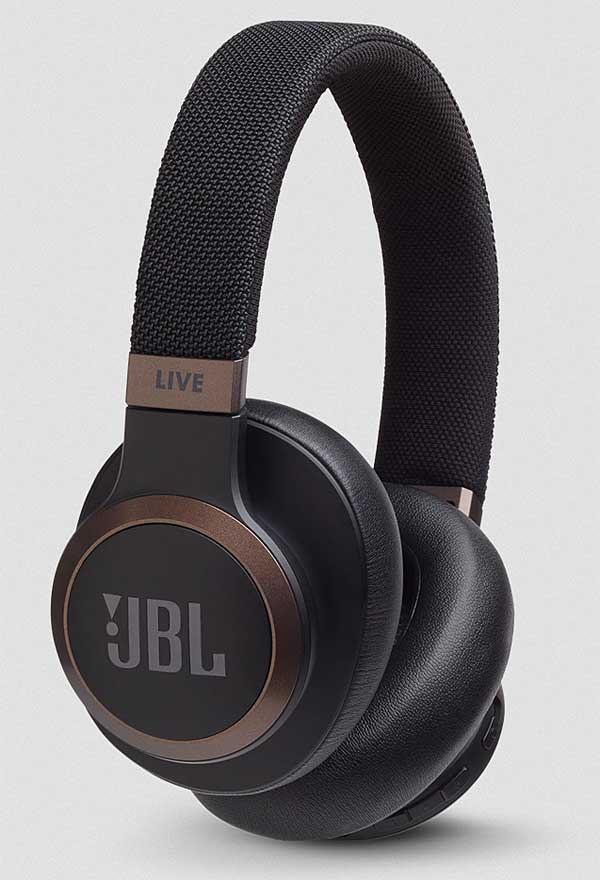
JBL Live 650BTNC
($199.95) jbl.com
If you're on a budget, JBL's no-frills Live 650 measures up admirably on all BT/NC fronts compared with models at nearly twice the price— especially if you manage to find them at the $160 sale price, which makes them a steal. The Live 650 smothers an above-average level of local conversation and cabin hum, though its performance in that respect doesn't come close to the silent-listening provided by top models like the Bose and Jabra. Thanks to its below-average 9.14-ounce weight and soft earcups, the Live 650 can be comfy around your ears and noggin for many consecutive hours. Also, it provides the standard 20 hours of BT/NC playback.
Because the Live's earcups toggle up and down from swiveling arm pads, they provide a less rigid fit than some other headphones. Its manual controls are arranged (from rear to front) on the right earcup and include: an on/off slide, volume up/down buttons (these also double as track forward/back controls), a pause/play/call accept/end button, and Bluetooth pairing and NC on/off buttons. None of these controls are physically distinctive, so it'll take some time to get used to feel-finding them.
You hold the NC button down for two seconds to activate or deactivate it; there are no voice prompts for NC or any other operational status, and there's also no conversation mode I could identify. Double-tapping the left earcup activates either your phone's voice assistant or Alexa or Google Assistant, though I couldn't get Google Assistant to understand more than three words at a time, when it could understand anything at all. (I don't know if this was a headphone or a Google issue.)
The headphones live up to JBL's aural heritage with lively sonics, pronounced bass, and a wide soundstage. I also experienced surprising subtlety during both music and movie playback. The Live 650's NC passed about half of the cabin hum during my test, dousing the most egregious bottom-end, but not much else. Enough higher-end hum remained to interfere with quieter audio passages, necessitating an increase in volume.
JBL includes a fabric pouch to hold the folded-flat 'phones—an amenity that most lower-priced alternatives lack. If you've got the dough, I'd pony up for better NC. If not, JBL's Live 650 is a class option in the sub-$200 BT/ NC headphone class.
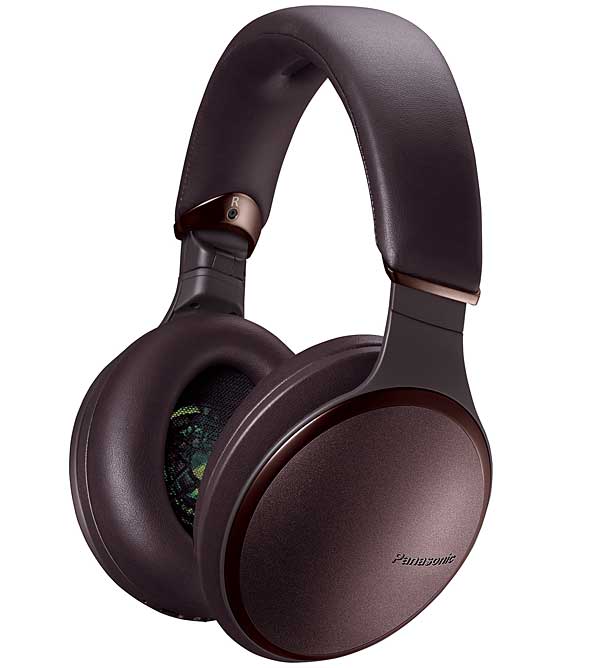
Panasonic RP-HD605N
($249.99) shop.panasonic.com
In the universe of mid-priced BT/NC headphones, Panasonic's RP-HD605N falls just shy of the long battery life value offered by the Jabra 85h, but offers more long-term comfort than the Cleer Flow.
Tapping the NC button on the right earcup perimeter toggles between low/ medium/high NC levels, while a press/hold turns NC off. By holding your palm over the right earcup you can dampen, but not pause, music, while the headphone's external mics open for conversation. At its high NC level, the Panasonic ranks just slightly behind the Jabra, and is about even with the Cleer. Similar to the Cleer, the Panasonic plays for 20 wireless/NC hours, but Panasonic's lithium-ion cell requires a hefty four hours to fully charge—longer than most BT/NC models—and you get just two hours of added play time with a 15-minute charge. This could emerge as an annoyance when hastily preparing for travel, and especially if you need a quick recharge during a short flight layover.
Operationally, the buttons aligned on the inside rim of the right earcup are not as easily feel-findable as those on the Cleer or Jabra models. And the power and NC controls look as if they should be slid, though you actually have to press down on them. The slide volume control—which doubles as a play/pause control when pressed—is the furthest back, so it's the easiest to identify by feel. Ball joints allow the earcups to sit over your ears at just the right angle, and the wide headband disperses the headphones' other- wise lighter-than-average 9.5-ounce weight, both of which make the Panasonic more long-term comfortable than the Cleer and about on par with the heavier Jabra.
The Panasonic is both LDAC- and aptX HD-compatible and delivers a wide soundstage with good stereo separation. Its sound balance brings out the high and low peaks in music and can help boost enjoyment of other- wise compressed-sounding recordings, as well as help mask ambient noise that its NC fails to dampen. However, the Panasonic lacks the sonic subtlety you'll hear with higher-priced, more finely- tuned 'phones. For example, movie dialogue was crisp, but surround effects weren't quite as pronounced as with the Jabra.
If you can't find the Jabra on sale, the Panasonic RP-HD605N's above- average NC, long-term comfort, and good overall sound makes it a viable value option.





